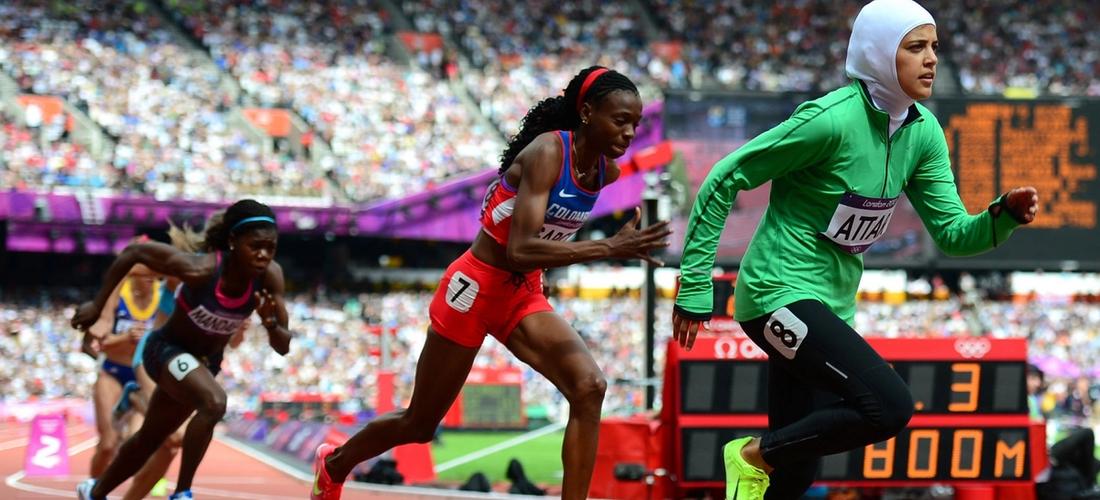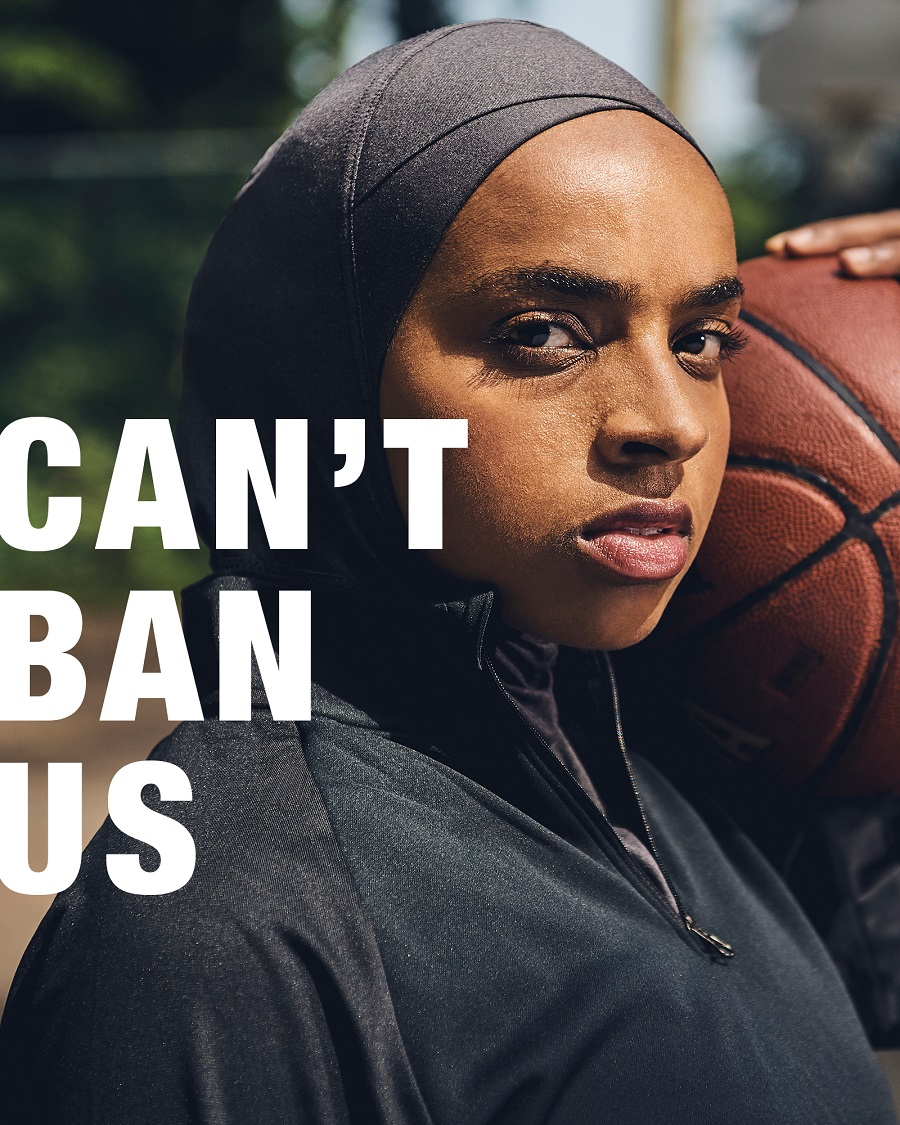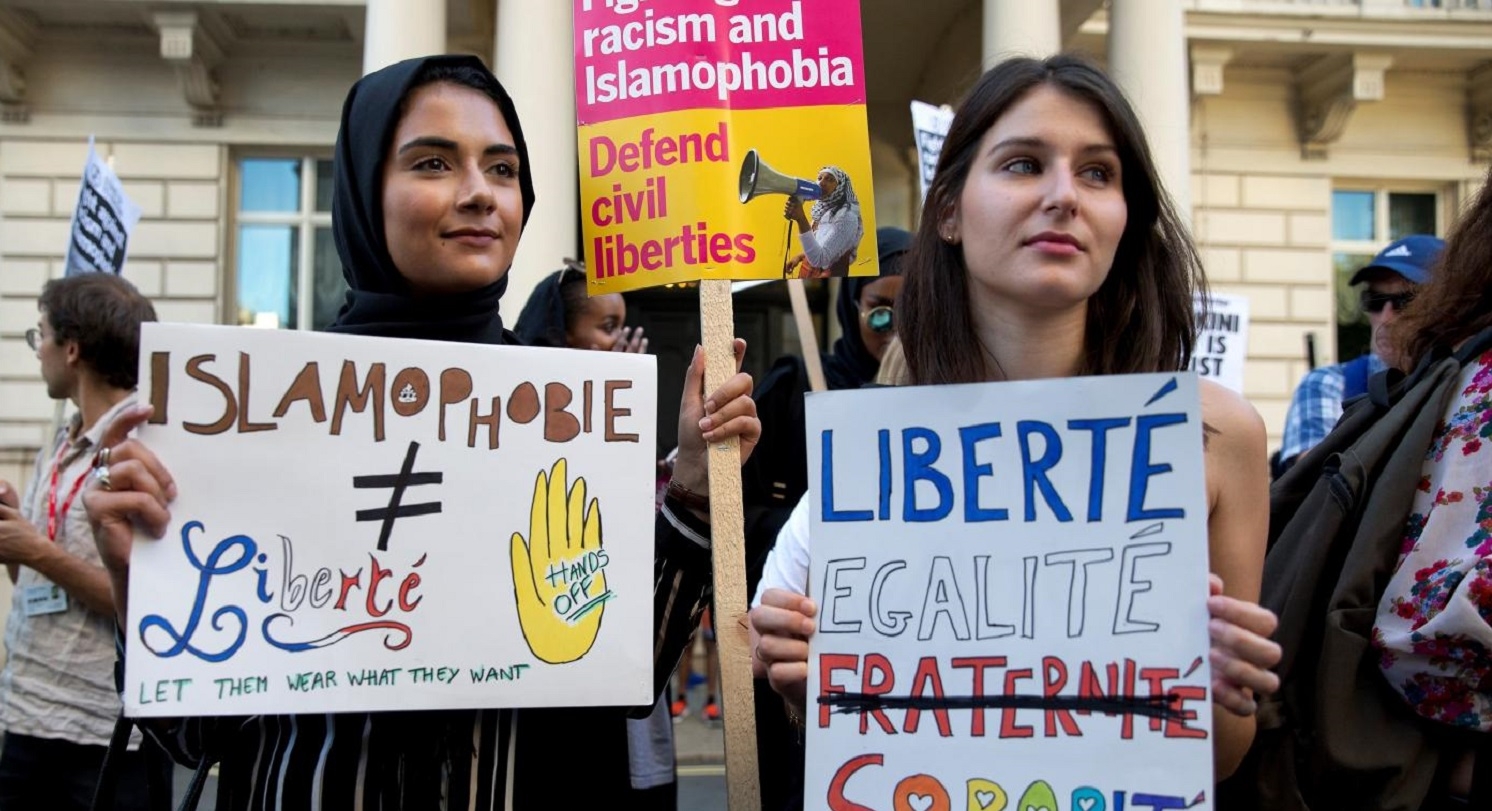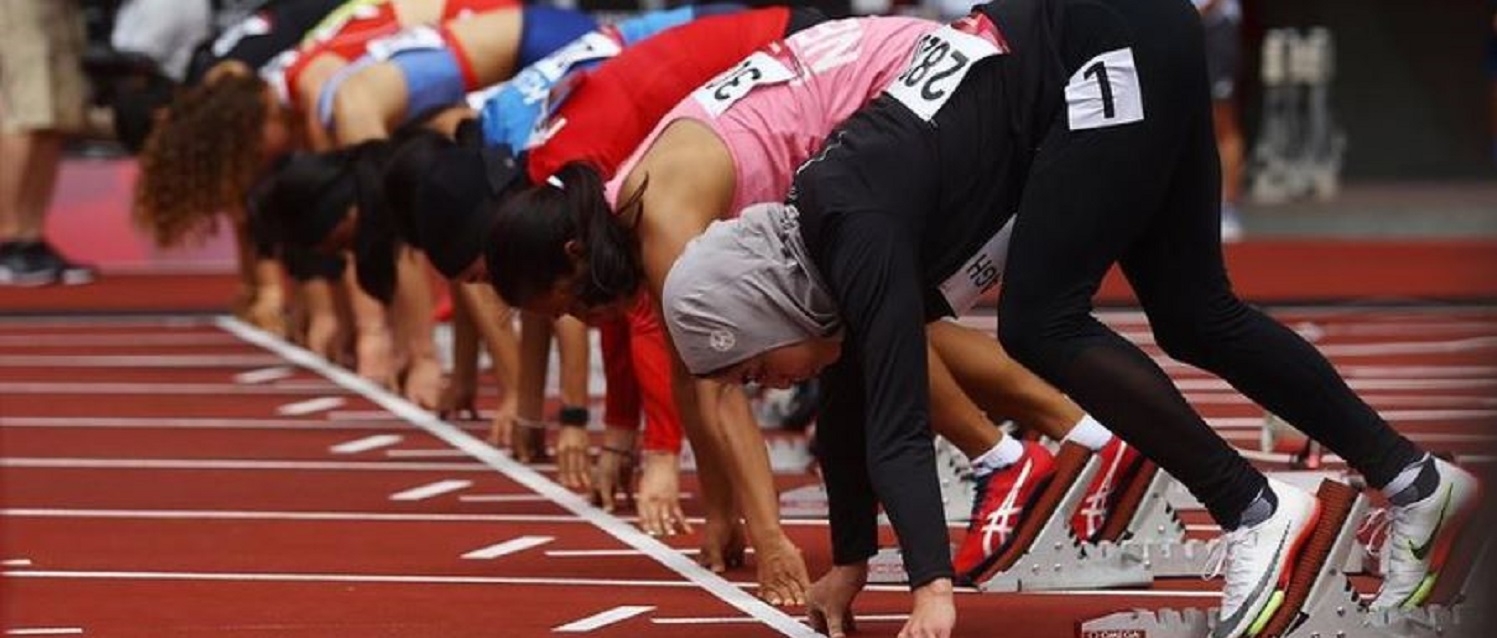#CantBanUs – French Senate Votes to Ban Hijab in Sports Competitions
Current Events
|
Jan 21, 2022
|
6 MIN READ

Saudi Arabia's Sarah Attar competes in a women's 800-meter heat during 2012 London Olympics on Aug. 8, 2012. (Anja Niedringhaus / AP) Image source: Pinterest;
A group of 300 French politicians have made it their business to decide the fate of a Muslim woman weaing hijab while engaging in sportsmanship. And in a decided legislative victory, they have succeeded in making it an act of disobeying law to observe an act of faith.
160 votes to 143. That’s what it took to pass an amendment in France, proposed by a right-wing group, to ban the hijab in sports competitions. Why? Because the French Senate argued that “neutrality is a requirement on the field of play.”
In a motion masked as progressiveness and “forward thinking” the French Senate has pronounced that what was once the key footing for a secular society – to practice one's faith without judgment – is now an obstruction of justice. And if broader society does not feel for women who have been wrongly oppressed by this decision, then we need to take a hard look at ourselves.
Because this is not just oppression of Muslim women, it is the canary in the coal mine that human rights are at risk.
The language of the amendment says that the wearing of “conspicuous religious symbols is prohibited” to compete in official competitions and events organized by sports federations. But, as Al Jazeera reported, in their written support of the amendment, French senators specifically stated that the amendment bans “the wearing of the veil in sports competitions,” saying that hijabs are a safety risk for athletes when they practice or compete.
I call BS.
But we all know that in France, this has never really been about safety.
It was a little over a year ago that my Haute Hijab team member Noor Suleiman and I put together a presentation on various types of hijabs, fasteners (pins and magnets) used to secure hijabs, materials used to make hijabs, varieties of sports hijabs available to athletes (including our own Sport Collection) and the (non) risks associated with wearing hijab in contact and non-contact sports to the National Federation of High School Sports, who was exploring changing their guidelines around requiring waivers for religious headwear in their fall, winter and spring sports.
Based on years of design research, real-world experience and interviews with hijab-wearing women who competed in sports, both on an amateur and professional level, we made the case that one can safely wear hijab while competing in contact and non-contact sports – that it is not an impediment to sports participation.

Basketballer and HH Sport Ambassador Bilqis Abdul-Qaadir
The NFSH agreed and went on to eliminate the need for waivers for religious headwear in several of their fall, winter and spring sports, including volleyball, soccer and field hockey.
But we all know that in France, this has never really been about safety.
A History of Islamophobia in France
Last year in February, French parliamentarians in their lower house passed a bill to increase oversight of religious schools and houses of worship, requiring (among other things) religious groups to have their accounts verified and allowing the state to close places of worship and ban religious leaders deemed “extremist.”
Following this, an amendment to a proposed law that would reinforce “the respect of the [French] Republic’s principles” was passed by the French senate. This amendment banned the hijab for minors under the age of 18. Also banned are Muslim hijab-wearing mothers from accompanying their children on public school field trips.
And 15 years before all of this, in 2004, finally a law was adopted to prohibit all religious signs in public schools. “And ever since it’s been going on and on,” said Rim-Sarah Alouane, a a Ph.D. candidate in comparative law and a researcher/legal academic at the University of Toulouse who I interviewed last year about the deep French historical suspicion and animosity towards religion which she said going back centuries to the country’s history with the Roman Catholic Church.
Understanding this push-pull history between religion and a secular state, explains why hijab ban amendments and laws as well as a rise in Islamophobia has been a constant issue in France, especially in the past two decades.
As Rim-Sarah told me, “In the United States, you have the wall of separation between church and state. This separation ... was built in a way to protect the believers against potential abusers from the state. In France it’s the other way around. We’re going to protect the state against the potential abusers of religion,” says Rim-Sarah.
This trajectory, however, has morphed over the past few decades into a targeted campaign towards French Muslims and immigrants, especially born by visibly Muslim women, spurred on by the country’s colonizer history and a number of attacks France has faced by religious extremists.

Image source: Wikimedia Commons
“[France] colonized a lot of Muslim-majority countries. The starting point was Algeria. The Muslims in Algeria were considered indigenous. They were not considered French Muslims because they were Muslims. Applying laïcité (secularism) would mean equaling them with others. And the hijab has a double kind of connotation in France,” Rim-Sarah explained. “It’s an object of desire, this orientalism – what is behind the veil, the objectification of Muslim women. But it’s also perceived as a threat, because the hijab was used as empowerment against a colonizer. The colonial period has really impacted this view of Muslims.”
In the amendment banning religious wear in sports, French senators said citizens are free to practice their religion but said “one should refrain from putting forward their differences,” adding that “it is necessary for the state to clearly define the rules.”
Yes, you read that correctly.
So What Is France’s Problem with Muslims and the Hijab?
Rim-Sarah said that it’s all about visibility. “Nobody cares about the hijab when it's your maid who is wearing it. Because when Layla is going to clean a senator’s office, she is invisible. But when Layla’s kid, Sumayra, is highly educated, went to college, wears a hijab, wants to have a more visible position and is fighting for her rights and is doing things that are very empowering, her visibility becomes a problem.
“It’s a problem of feminism as well. You do have a lot of feminists who are anti-hijab. And it’s a matter of power and domination: ‘We know better. We are going to decide what is good for you. We’re going to end political Islam by telling a mother she cannot wear hijab on a school trip, or a hijabi footballer that she cannot wear hijab though she is a skilled player, or a young woman that she can’t wear a burkini on the beach.’ It’s a colonial mentality, she said.
France is set to host the Paris Olympics in 2024 and has not commented yet on whether the hijab/religious headwear ban would be implemented.

Saudi sprinter @yasmeen_aldabbagh wearing HH Sport in competition at the 2020 Tokyo Olympics.
And if the last Olympics are a bellwether of things to come, this ban will be coming back to haunt them. Not only have hijab-wearing women been competing in the past several Olympics, the fight to wear what one wants to wear in competition expanded in the last Olympics to the German gymnastics team and Norwegian Olympic Women’s Handball team, both who asserted their right to wear what they want, to choose clothing that de-sexualizes their sport.
“We wanted to show that every woman, everybody, should decide what to wear,” said German gymnast Elisabeth Seitz to reporters at the 2020 Tokyo Summer Olympics. “That doesn't mean we don't want to wear the normal leotard any more. It is a decision day by day, based on how we feel and what we want. On competition day, we will decide what to wear."
Hijab-wearing Muslim women have been fighting for their right to compete in hijab from school to college and all the way to professional levels for years. Our ongoing “#CantBanUs” campaign is just about that – the right to dress modestly and in hijab (or however one wants to) as a Muslim athlete. We stand with the Muslim women of France.
French hijab-wearing soccer player Karthoum Dembelé and other hijab-wearing female players started a movement called Les Hijabeuses. With about 150 members and more than 5,000 followers on Instagram, Les Hijabeuses staged a protest at the French Football Federation headquarters last summer. “We are all fighting for more inclusive football, which would integrate all women,” Dembelé said in this Al Jazeera article. “We are trying to make people understand that we are female athletes. It’s not because we wear the hijab that we should be excluded from the pitch.
We couldn’t agree more.
We are proud to join these fierce women, like Najah Aqeel and our HH Sport Ambassador Bilqis Abdul-Qaadir, in their fight against hijab bans with our “Can’t Ban Us” campaign that aims to elevate these stories and engage in advocacy efforts. Please share your story with us here.
Subscribe to be the first to know about new product releases, styling ideas and more.
What products are you interested in?

